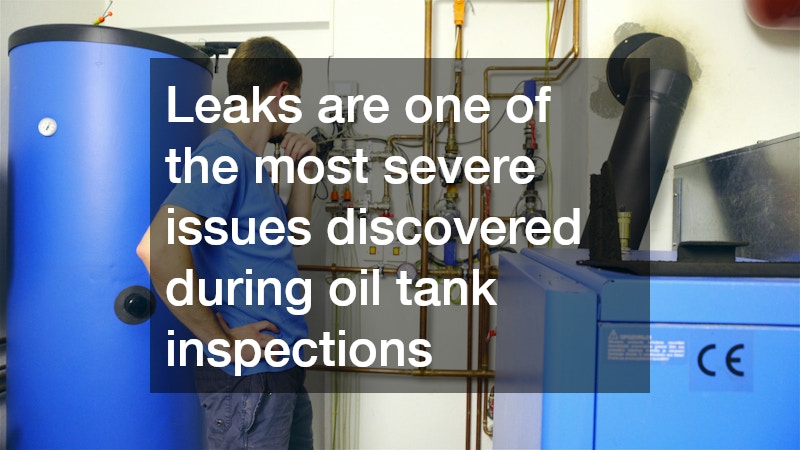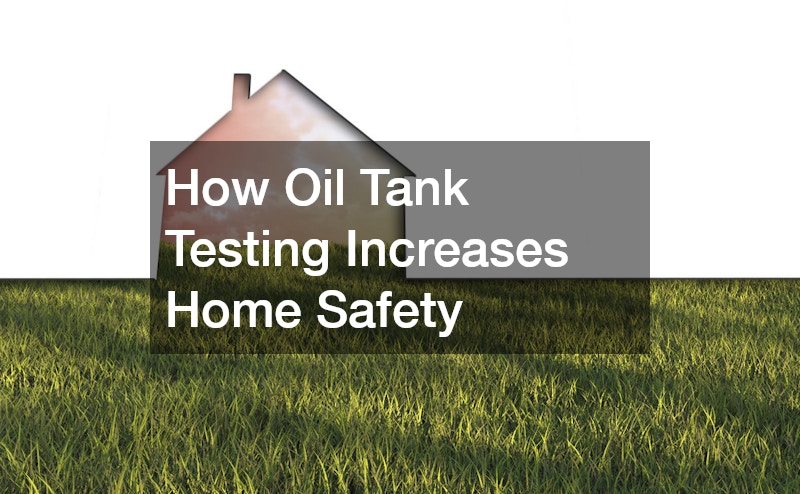Oil tanks are often an overlooked component of residential safety, yet their functionality directly affects the well-being of a household. Regular oil tank testing ensures that potential issues are identified and rectified before they escalate. It’s essential for homeowners to understand the various dimensions of oil tank testing and its vital role in promoting home safety and environmental protection.
Preventing Tank Failure
Homeowners often underestimate the importance of having their oil tanks assessed and maintained regularly. Neglecting oil tank testing can lead to catastrophic leaks, resulting in severe financial implications and health hazards. Furthermore, many homeowners are unaware that failing to conduct these tests can also expose them to legal liabilities in case of an oil spill.
Oil tank failures can lead to toxic spills that can contaminate soil and groundwater, posing immediate danger to both human health and local ecosystems. The presence of hazardous materials can significantly decrease property values, affecting homeowners’ investments. Moreover, in many jurisdictions, there are laws that mandate testing and proper maintenance of oil tanks, making regular testing a legal necessity rather than just a recommendation.
By prioritizing oil tank testing, homeowners can avoid the potential headaches associated with costly cleanup processes and insurance claims. Awareness of the risks enables homeowners to take proactive measures in safeguarding their homes, families, and the environment. Overall, regular testing is essential in preserving not only individual properties but also community health.
Finding Common Problems
During oil tank testing, several key issues can commonly be identified, including corrosion, leaks, and structural damage. These problems can arise due to age, wear and tear, or poor installation, and they present serious risks to homeowners. Corrosion, in particular, can lead to significant weaknesses in tank structure, increasing the likelihood of leaks over time.
Leaks are one of the most severe issues discovered during oil tank inspections. Even a small leak can result in substantial environmental damage and costly remediation efforts. It is alarming to consider that oil tanks can leak unnoticed for long periods, leading to significant soil and groundwater contamination. This not only poses risks to public health but also often results in hefty fines and legal action against the homeowner.
Inadequately tested oil tanks can compound these issues, with homeowners often left unaware of critical problems until it’s too late. Proactively addressing corrosion and leaks not only fosters home safety but also contributes to a healthier environment overall. Regular testing of oil tanks is, therefore, essential in ensuring that these risks are minimized and any necessary repairs are carried out promptly.
Mitigating Environmental Risks
Regular oil tank testing has far-reaching benefits for the environment, primarily by mitigating the risk of harmful spills and contaminations. When oil tanks are thoroughly tested, any potential vulnerabilities can be swiftly identified, thus preventing catastrophic environmental incidents. If left unchecked, even minor leaks can escalate, leading to widespread ecological damage.
Moreover, the effects of oil spills can take decades to resolve, with toxic substances seeping into ecosystems and harming wildlife. Regular testing not only helps to identify and repair weaknesses in oil tanks but also provides homeowners with the valuable knowledge necessary for making informed decisions about oil usage and storage. This proactive approach promotes the sustainability of local environments and preserves biodiversity.
Importantly, the importance of regular testing extends beyond immediate environmental benefits and becomes a matter of community health. By ensuring that oil tanks are maintained within safety standards, homeowners can contribute to cleaner air and water in their local communities. Consequently, this aligns with broader efforts aimed at fostering sustainable living practices and minimizing ecological footprints.
Choosing the Right Service
Choosing the right oil tank testing service can be a daunting task for many homeowners. To ensure quality service, homeowners should look for companies that hold relevant certifications from recognized industry organizations. These certifications are indicators of a company’s adherence to best practices and regulatory standards.
Experience also plays a crucial role in selecting an oil tank testing service. Companies with a robust portfolio and extensive experience in the field are more likely to possess the knowledge necessary to accurately assess and address potential issues. Additionally, time spent in the industry can lead to refined methods and a solid understanding of local regulations, ensuring that testing is compliant and thorough.
Customer reviews and testimonials are invaluable resources for homeowners in choosing a service provider. Checking for previous customer experiences can provide insight into the quality of service, reliability, and professionalism. A transparent and reputable company will readily share its record of service and should encourage potential customers to ask questions or request references to validate their claims.
Oil tank testing is a crucial practice that every homeowner should prioritize. It not only ensures the safety and security of one’s home but also has significant environmental implications. Understanding the need for regular inspections, potential issues, costs associated, and how to choose a service provider can empower homeowners to take responsible actions.
By embracing the importance of oil tank testing, individuals can enhance their home safety and promote environmental conservation. This proactive approach can make a significant difference, offering peace of mind and safeguarding both personal and community health.

